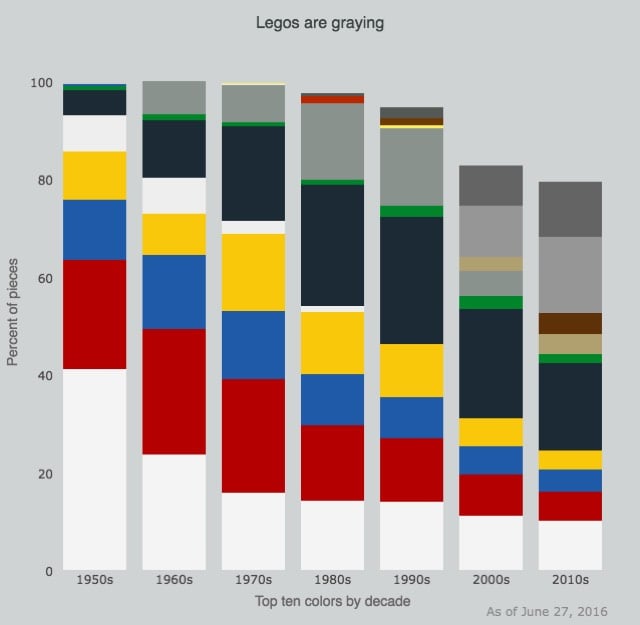Statistical analysis of 67 years of Lego sets

Life-long Lego fan Joel Carron recently analyzed a data set containing the types, colors, and number of pieces in every Lego set from the past 67 years and graphed the results. The shift in colors is the most striking thing to me: Legos are graying.
Legos have gotten darker, with white giving way to black and gray. The transition from the old grays to the current bluish grays (or “bley”) is a hot-button topic for many Lego fans.
If you look at the dominant color palettes for all of the tie-in sets they’re doing now, it’s not difficult to see where those darker colors are coming from.





Stay Connected